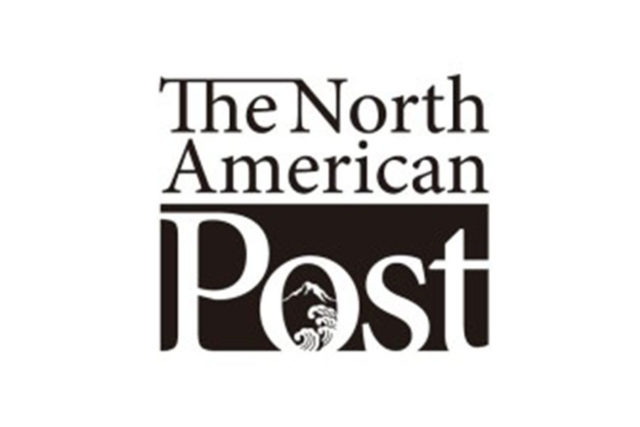By Yukiko Tanaka
Golden Alley, which sits at the northeast corner of Kabuki-chō, is often talked about as a “favorite spot” among foreign tourists. It is a wonder what attracts them to a place with just a few narrow alleys that are lined with bars all so tiny that no more than half a dozen can sit. During the 1960s and the ‘70s, those bars were frequented by certain types of patrons, such as journalists, writers, artists, filmmakers, etc. Dropping in without introductions, however, was considered improper. They were, you might say, exclusive bars.
Golden Alley, in fact, sits inside the area once referred to as “blue-light district,” an area where former “licensed prostitutes” worked as “self-employed,” serving drinks in small, shabby often two-storied houses. They, the “freed prostitutes,” sometimes took customers upon request to a room upstairs where they offered other kind of services. This, of course, was before the days when bars in Golden Alley were patronized by their writer and artist clientele, but among those familiar with this alley in that older era are a few who testify that in their days it was possible to have drinks and then go upstairs afterwards just for 700 yen. Sometimes they even spent a night, they said, and had breakfast the next morning.
Those were the good old days, indeed. Today, bars in Golden Alley are not so particular or choosey of to whom they serve, but I do not know if they still are places where anyone is readily accepted and made to feel comfortable as they once were. It is possible, however, that their uniquely personable quality has somehow continued and has since become a culture of Golden Alley bars. Could this be a reason for it becoming a popular destination among foreign visitors? According to Mike Morasky, longtime resident of Japan and expert on Izakaya, prostitution houses switched their business, upon anti-prostitution law’s passage, to merely serving alcohol. While those in “red-light” districts have become sunakku (snack bars) gaudy colored store fronts, those in “blue-light” districts tended to transform themselves into restaurants and bars in the crowded spaces of alleys.
Another Shinjuku spot that is as popular among foreign tourists as Golden Alley is Omoide-yokocho, “Reminiscent Alley.” It is made up with a couple of very narrow streets located on the way from the West Entrance to the East Entrance of Shinjuku Station. Being by the raised railway tracks, it was once a place where black market sprung up spontaneously shortly after the war. It does not have as a rich history behind it as the other Alley. Jammed with makeshift places, what is available here is primarily food but in recent years a few bars as well.
An answer to why foreigners are drawn to this seemingly unattractive spot is, for one, that eating and drinking are inexpensive. But what else do they find there? What satisfaction do foreigners find here as they are crammed in rubbing their shoulders with strangers? Japanese patrons of Reminiscent Alley may be drawn because of nostalgia, but for foreigners, are they attracted because they think they’ve found an “old Tokyo”? Or is it because they know, despite its shabbiness, they are safe and food is reasonable (they are in Japan, after all)? Is it the combination of the precariousness and the reassurance that is the key? In the movie “Blade Runner,” released during the 1980s based on science fiction with a theme of world destruction, I recall a scene: in a crowded market place swarming are people eating just to fill their stomachs who all look distraught with a glimpse of pre-modern high rises in the distance. The scene appeared to be an Asiatic city, particularly with Japanese and other languages shown on storefronts.
Despite its dark coloration and futuristic setting, this scene of the film reminded me of Shinjuku, a city with skyscrapers but also crowded with many alleys, crammed in which are many eating and drinking places. People, whoever they are and wherever they came from, do know that they are nameless inhabitants of this precarious world. The Japanese, particularly of those in large cities, have destroyed much of the old, are still destroying, in the name of progress and better alternatives; they have constructed a city with glass, steel and concrete and filled suburbs with tall, box-like buildings they call the “New Town.” There is no wonder, then, if places like Golden Alley and Reminiscing Alley stir up a sense of nostalgia. They are being reminded of what they have lost.
Kabuki-chō has over fifty hotels if one includes kapuseru hoteru, or “capsule hotels,” in which each space, a room, is large enough for a man to stretch his body (they do not take women as guests for security reasons) and is also equipped with a television set. Capsule hotels are uniquely Japanese and you should also know that their communal toilets and showers are very clean and nice. About 30 percent of their guests are said to be foreigners. Kabuki-chō also offers large-scale, gorgeous establishments like “restaurant theaters” where you see a show of giant robots. Here, too, the majority of the patrons are foreigners. What this means is beyond me but as the Japanese government have decided to make foreign tourism a major part of its economy, it should figure out the reasons behind Shinjuku’s recent rise in popularity among foreign tourists.







